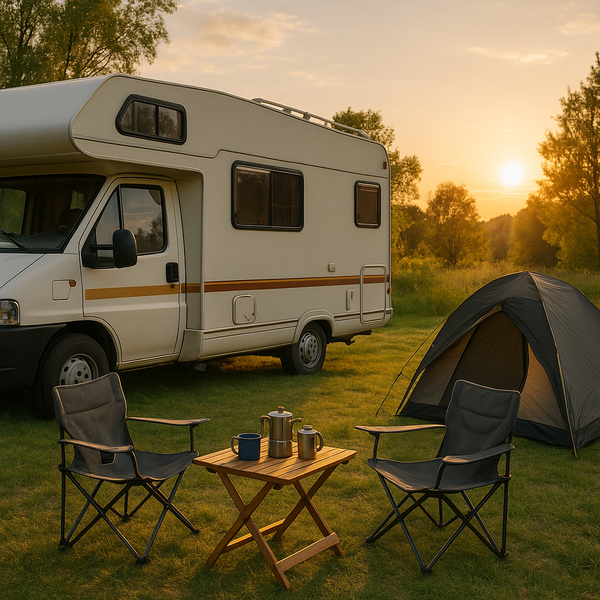
Embarking on an adventure often means hitting the open road and bringing your accommodation with you. Campers, or recreational vehicles (RVs), offer unparalleled freedom and flexibility for travelers seeking to explore national parks, scenic routes, or simply enjoy a weekend getaway in nature. Whether you're a seasoned RVer or considering your first venture into mobile living, understanding the diverse landscape of campers is the crucial first step.
Understanding the Different Types of Campers
The world of campers is vast, offering a variety of sizes, features, and designs to suit almost any need or budget. Knowing the distinctions between types is essential when considering which vehicle aligns best with your travel style and requirements. Generally, RVs are categorized as motorhomes (motorized vehicles) or towable RVs (pulled by another vehicle).
Motorhomes: Driving Your Home
Motorhomes are self-propelled recreational vehicles offering integrated living spaces and driving compartments. They come in three primary classes:
Class A Motorhomes: These are the largest and most luxurious motorhomes, resembling buses. Built on a heavy-duty frame, they often include spacious living areas, full kitchens and bathrooms, private bedrooms, and extensive storage. They are ideal for full-time RVers or those seeking maximum comfort and amenities on long trips. Driving a Class A requires comfort with larger vehicles, but they offer a commanding view of the road.
Class B Motorhomes: Often called campervans, Class B motorhomes are built on van chassis, making them the smallest and easiest to drive among motorhomes. Despite their compact size, they typically include sleeping areas, a small galley kitchen, and often a wet bath (toilet and shower combined). Their maneuverability makes them suitable for navigating city streets and smaller campgrounds, appealing to solo travelers, couples, or those prioritizing versatility.
Class C Motorhomes: These are built on a cutaway chassis with an attached van front, identifiable by the distinctive cab-over bunk or storage area above the driver's compartment. They offer a balance of size and amenities, larger than Class B but smaller than Class A. Class C motorhomes usually feature sleeping areas, kitchens, and separate bathrooms, making them a popular choice for families.
Towable RVs: Hooking Up Your Adventure
Towable RVs require a separate vehicle to pull them, offering flexibility as you can unhitch and use your tow vehicle for exploration once you reach your destination. Types of towable RVs include:
Travel Trailers: Ranging widely in size from small teardrops to large multi-slide-out units, travel trailers are hitched to the rear of a tow vehicle. They offer diverse layouts and features, making them suitable for various group sizes and budgets. Their weight can vary significantly, requiring an appropriately sized tow vehicle.
Fifth-Wheel Trailers: These large trailers are designed to be towed by a pickup truck equipped with a special fifth-wheel coupling hitch in the truck bed. Fifth wheels are typically taller than travel trailers, offering split-level floor plans, often with a master bedroom located in the raised front section. They are known for their spacious interiors and stable towing experience.
Pop-Up Campers (Folding Campers): Lightweight and collapsible, pop-up campers fold down for easy towing and storage and expand at the campsite to reveal sleeping areas and often a small galley. They offer a tent-like camping experience with added comfort and off-the-ground sleeping, appealing to those transitioning from tent camping or seeking a more economical option.
Toy Haulers: These trailers (available in travel trailer or fifth-wheel styles) feature a garage area in the rear, often with a ramp door, designed to carry motorcycles, ATVs, or other recreational gear. The garage area often converts into additional living or sleeping space once the toys are unloaded.
Choosing the Right Camper for You
Selecting the ideal camper involves considering several factors: your budget, the number of people traveling, trip duration and type (weekend trips vs. long-term travel), desired amenities, and the capabilities of your current or future tow vehicle (if considering towable options). Researching different models, floor plans, and features is key to finding a match.
Essential Camper Accessories and Gear
Outfitting your camper with the right accessories enhances comfort, convenience, and safety. Essential items often include leveling blocks or jacks, a freshwater hose, sewer hose, electrical adapters, chocks, and potentially solar panels for off-grid camping. Interior items like cookware, bedding, and organizational tools also contribute to a comfortable experience.
Maintenance and Care
Owning a camper requires regular maintenance to ensure its longevity and safe operation. This includes checking tires, brakes, and lights, inspecting the roof and seals for leaks, maintaining the plumbing and electrical systems, and properly winterizing or dewinterizing the unit based on the climate. Following the manufacturer's recommended maintenance schedule is crucial.
Planning Your Camper Adventures
With your camper ready, planning trips involves researching destinations, reserving campsites (especially in popular areas or peak season), mapping out routes, and preparing meals. Campgrounds vary widely, from rustic sites in national forests to full-hookup sites in private RV parks with numerous amenities. Understanding campground types helps match your camper's capabilities and your desired experience.
The freedom of the open road combined with the comfort of having your own space makes camper travel a rewarding experience. Whether you opt for the ease of a campervan, the spaciousness of a fifth-wheel, or the versatility of a travel trailer, a world of exploration awaits. By understanding the types of campers, considering your needs, and preparing adequately, you can embark on countless memorable journeys.

